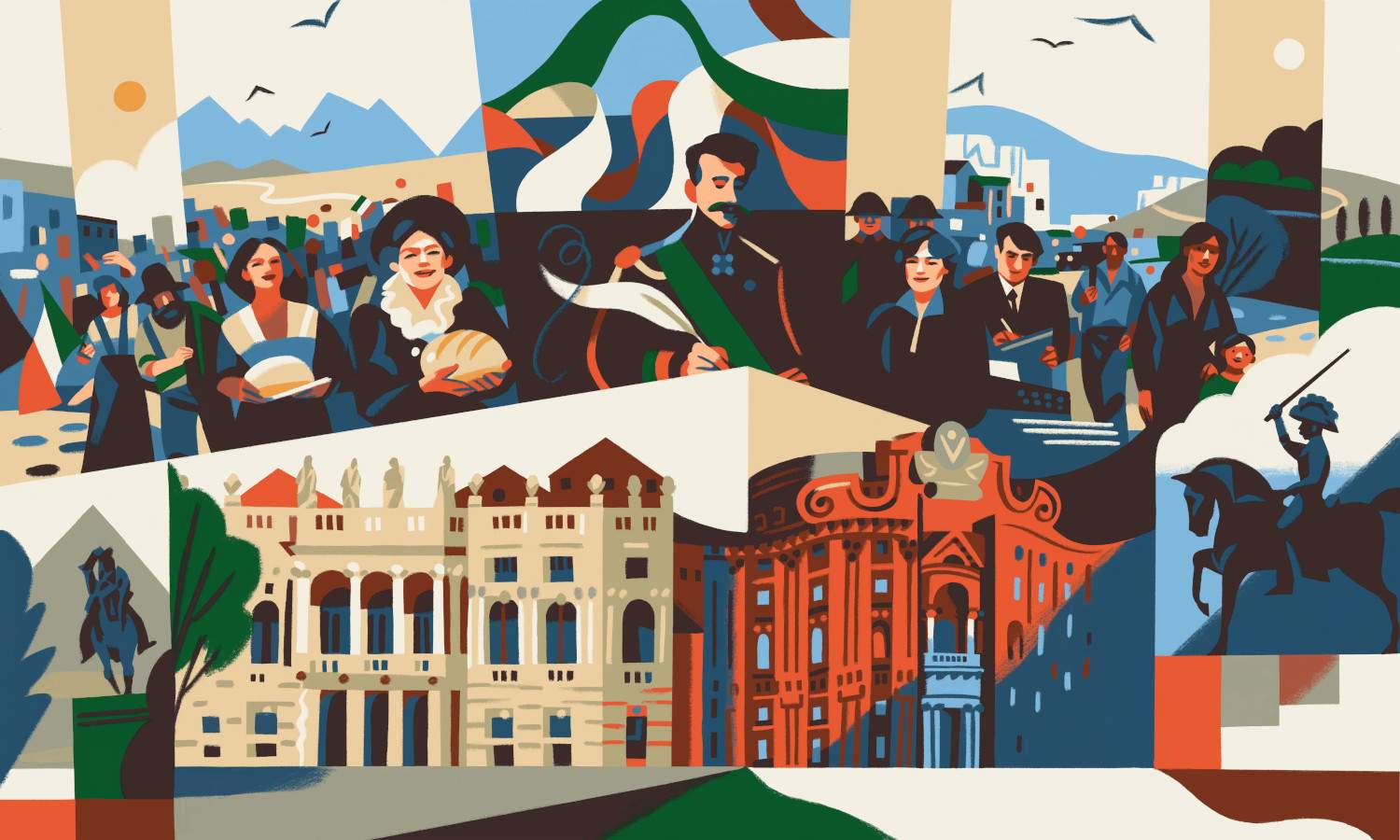Palazzo Madama in Turin continues its mission as a Civic Museum in an effort to enhance Turin’s municipal collections, dialogue with the local area, and present new temporary exhibits. From Feb. 7 to April 2, 2024, it presents Palazzo Madama is Europe, the new exhibit focusing on the founding values of European peoples. Indeed, the palace embodies, with its two thousand years of history, European history and identity: from the first century decuman gate of Augusta Taurinorum; from the 13th century medieval castle and then Renaissance residence; in the 18th century masterpiece of the Baroque; and in the 19th century seat of the Senate that decreed Italy united after carrying out the Statuto Albertino, the constitutional charter born from the revolutionary cycle and European uprisings of 1848. Promulgated by Charles Albert of Savoy Carignano on March 3, 1848, with the Unification of Italy on March 17, 1861, the Statute became the fundamental charter of the Kingdom until the entry into force of our republican Constitution, which still finds in it foundations.
After the commission by the Ministry of Foreign Affairs and International Cooperation of the illustrations relating to what was then only the utopia of Altiero Spinelli and Ernesto Rossi - the Ventotene Manifesto of 1941 - and the image commemorating the birth of the European Economic Community with the Treaties of Rome of March 25, 1957, Palazzo Madama chose to complement this intervention with anillustration dedicated to the Albertine Statute, created by Marta Signori, who significantly took her cue from the Proclamation announcing the Statute’s closing with the words of Carlo Alberto: “While we are thus providing for the highest emergencies of the political order, we wish no longer to defer fulfilling a desire, which we have long nurtured, by reducing the price of salt to 30 cents a kilogram until July 1 next coming, for the benefit principally of the poorer classes, persuaded to find in the more affluent that compensation of public revenue, which the needs of the State require. May God protect the new era that is opening for Our peoples; and while they may make use of the greater freedoms acquired, of which they are and will be worthy, let us expect from them the strict observance of the Laws in force, and the unperturbed quietude, so necessary to complete the work of the internal order of the State. Given in Turin on the eighth day of February one thousand eight hundred and forty-eight.” This is the generative text of the Statuto Albertino, the first stone of the recognition of civil rights and the first constitutional charter of united Italy.
Palazzo Madama was again a protagonist in 1861 with a new document essential to the Farsi of Europe: on October 18, 1961, it hosted the signatories of the European Social Charter, the Council of Europe treaty that protects the rights of every individual in his or her daily life, namely the right to housing, health protection, education, work, legal and social protection, free movement of persons and non-discrimination. These are the rights generated by the founding values of the European peoples-Freedom, Respect for Human Dignity, Equality, Democracy, Science, and Respect for Human Rights-which are complemented by the primary values of the European Union: Fraternity, Work, Culture, Peace, Environment, Rule of Law, and Inclusion. The illustrations completed in 2022 by Lucio Schiavon, Ale Giorgini, Emiliano Ponzi, Bianca Bagnarelli, Marina Marcolin, Francesco Poroli, and Giulia Conoscenti now complement the work dedicated by Andrea Mongia to the European Social Charter.
A set now presented in the Medieval Court as an exhibit to complement what was accomplished with The City Gate. A tale of 2,000 years to evoke and restore to Palazzo Madama the aura and role of a building capable of traversing history and making itself a protagonist.
Image: Marta Signori, The Statute of the Kingdom of March 4, 1848 (the Statuto Albertino)
 |
| Palazzo Madama presents a new exhibit on the founding values of European peoples |
Warning: the translation into English of the original Italian article was created using automatic tools. We undertake to review all articles, but we do not guarantee the total absence of inaccuracies in the translation due to the program. You can find the original by clicking on the ITA button. If you find any mistake,please contact us.